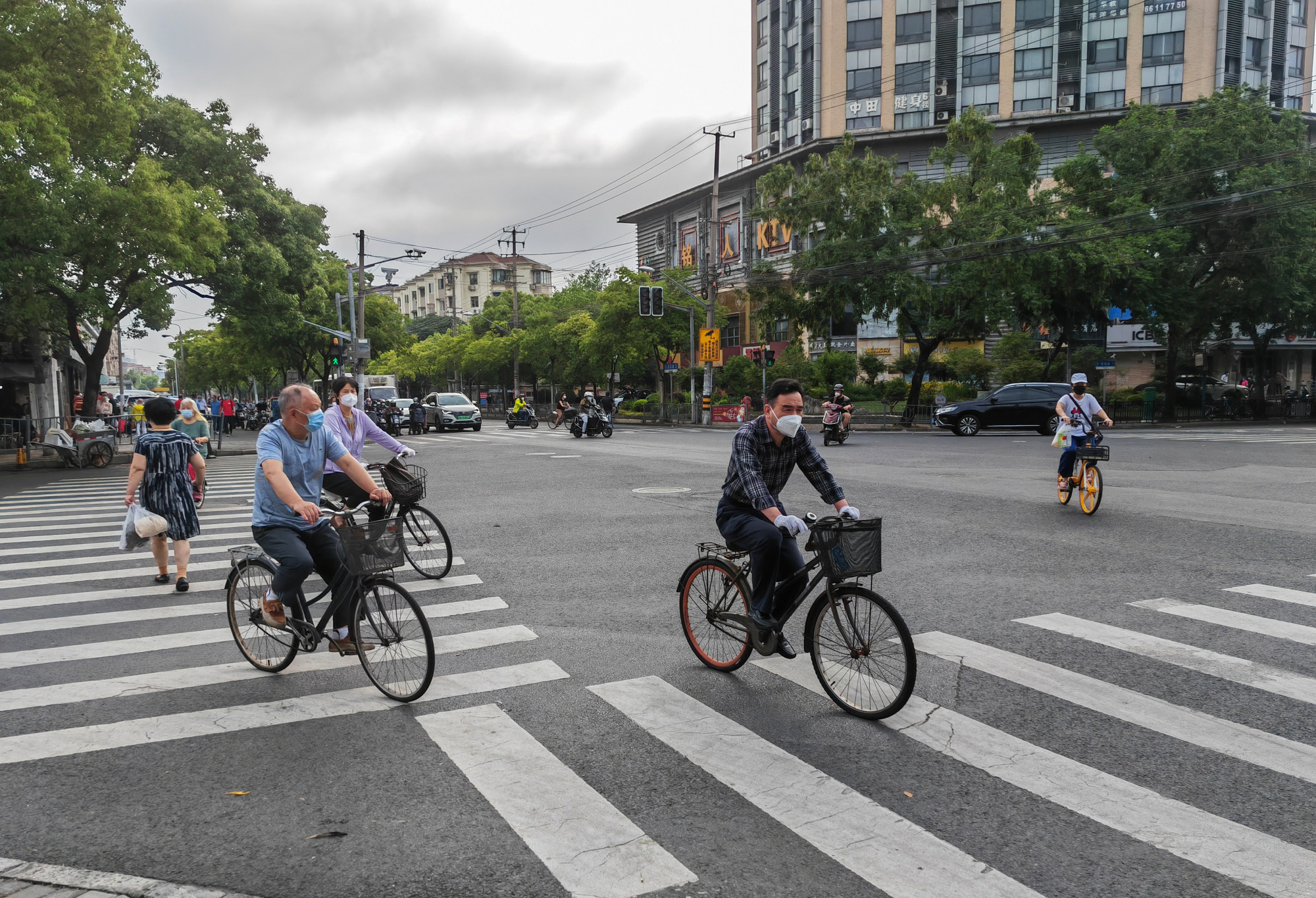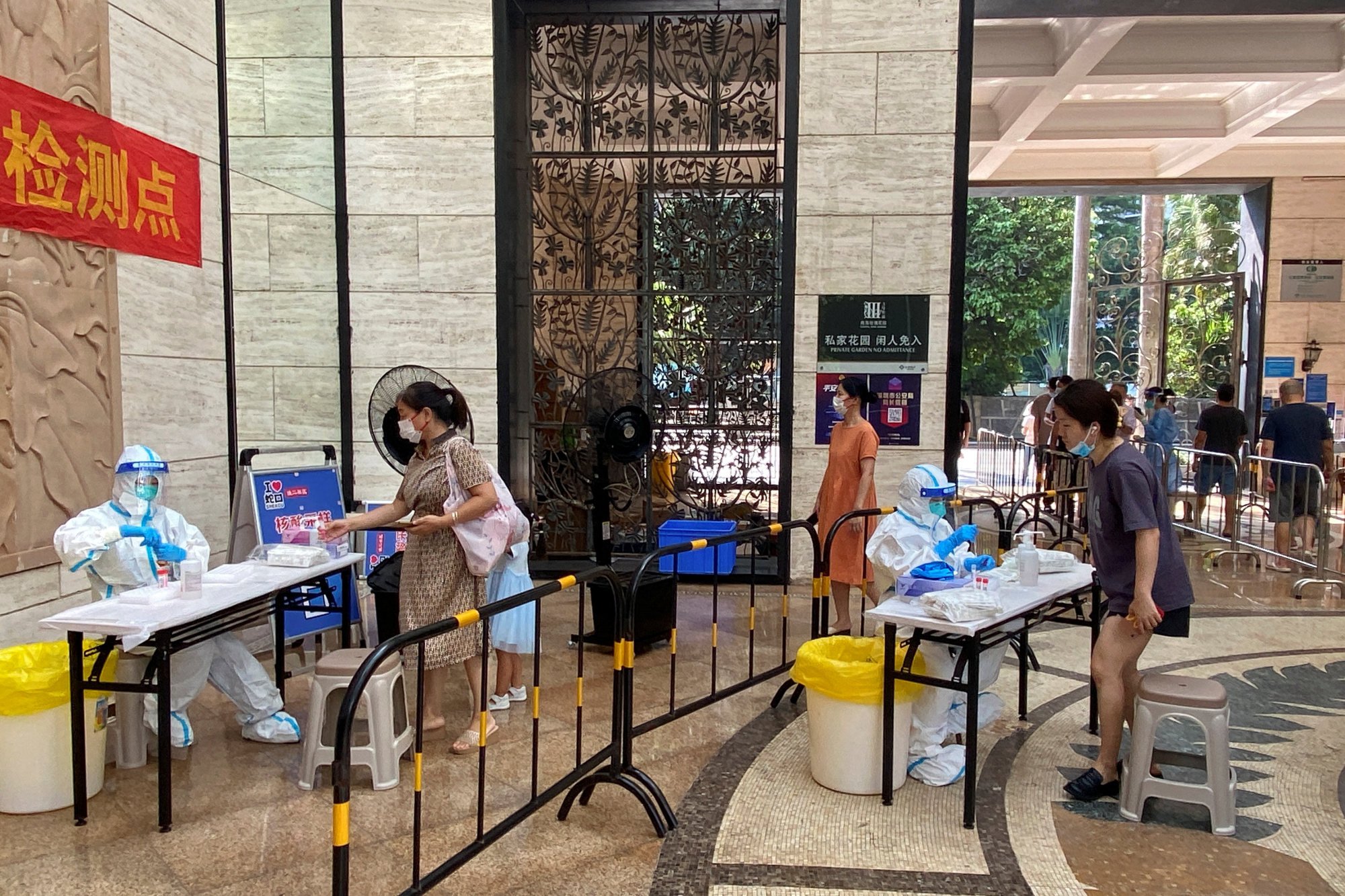
Explainer | Coronavirus: how China’s strict Covid-19 control measures have evolved over the past 5 months from Shanghai to Shenzhen
- China’s dynamic zero-Covid-19 strategy has seen some adjustments in Shenzhen, following its strict enforcement in Shanghai earlier this year
- At present, dozens of cities across the country have imposed Covid-19 lockdowns and travel restrictions across their communities

How are Covid-19 lockdowns enforced in Shenzhen and Shanghai?
That restriction was partially lifted on Monday for areas that have not reported new cases in the past three days, enabling public transport operations to resume and other businesses to reopen.
The Shenzhen government said it would adopt a “tiered control” method, which means applying different levels of restriction based on the Covid-19 situation in each subdistrict, known as jiedao in Chinese. Sub-districts that report new positive cases will go on so-called silence mode, in which people refrain from unnecessary activities, and residential compounds deemed as high risk will be under strict lockdown.

How do residents go about their lives under Covid-19 control measures?
Under Shenzhen’s silence mode directive over the weekend, authorities discouraged residents in six major districts from leaving their homes. But those working for government agencies and essential businesses, such as food supplies, were allowed to leave for work. Apart from that, only one person per household can go grocery shopping once every two days, with a permit from their residential compound manager.
From Monday, Shenzhen residents outside the locked down areas are free to leave home for work, but will need to show a negative Covid-19 test result within 24 hours to enter their compounds again.
During Shanghai’s two-month lockdown, most residents were not allowed to leave their homes. The city was classified into three zones – lockdown, control and precautionary areas – with different levels of risks and corresponding restrictions.
In the lockdown zones, where there was a positive case found during a seven-day period, all residents stayed inside their home unless they were taking a Covid-19 test. Those in control zones where no coronavirus cases were found during a seven-day period, people were allowed to take a walk inside their compound.
In the precautionary zones, residents were told they can leave their home. But in practice, most were only allowed to do activities inside their compound, or carry an official pass to go outside. This pass worked differently for each compound. Some residents, for example, were allowed to go out once a day, while others were only allowed to go out just twice a week.

What must people do to get their food and everyday supplies when restaurants and shops are closed?
The customers of Meituan and Ele.me can get their ordered supplies at the gate of their residential compounds. But for those under strict lockdown in high-risk areas, they must rely on community managers to deliver their groceries.
All shops in the six restricted districts – except for supermarkets, pharmacies and restaurants – were ordered to close during the weekend. These establishments resumed operations from Monday. Restaurants in certain areas were able to serve dine-in customers with 50 per cent capacity.
Meanwhile, businesses such as cinemas, karaoke parlours and gyms were ordered closed from last week in the six restricted Shenzhen districts.

What is the state of schools and factories under Covid-19 restrictions?
Under the Covid-19 control measures in Shenzhen, all schools were ordered closed. As such, students from primary to high school started taking online lessons to start their new semesters. Schools that can provide accommodation and keep students and teachers under a “closed-loop” environment were allowed to take 12th-grade students back to school to prepare for their university entrance examinations next year.
During Shenzhen’s lockdown in March, factories were only allowed to operate under a closed-loop mode, in which workers live and work in a compound without leaving.
Before the citywide lockdown started in Shanghai, kindergarten, primary schools and secondary schools were closed from March 12. Students in 9th, 11th and 12th grades, who faced more academic pressure, returned to school in early June. Others took online classes until the semester ended.

How are Covid-19 tests conducted in Shenzhen and Shanghai?
Shenzhen authorities made Covid-19 tests the norm in the city since March. Residents are required to take nucleic acid tests every 24, 48 or 72 hours via the city’s massive network of free-testing facilities.
Residents in the six restricted districts were ordered to go through two rounds of Covid-19 tests over the weekend. They are still required to present negative test results in the past 24 or 48 hours to enter any building or residential compound when the silence mode is lifted.
All positive cases are reported to local health authorities and taken to Shenzhen Third People’s Hospital, the city’s designated Covid-19 treatment centre. Close contacts of the confirmed cases will be quarantined at home or transferred to hotels and other facilities.
During the Shanghai lockdown, a network of nucleic acid test points was set up across the city. During the peak of infections, residents had to line up at these points every few days and conduct self-tests at home every day.
With the relatively large number of confirmed cases in Shanghai at the time, those found positive were transported to makeshift Fangcang quarantine hospitals and stayed there until their nucleic acid test results recorded negative infection. In some extreme cases, residents with negative test results, who lived in the same building with confirmed cases, were forced to go to quarantine hospitals to avoid the risk of spreading the virus.



